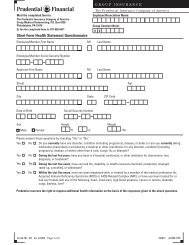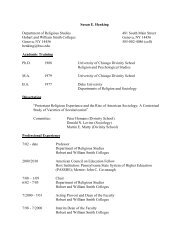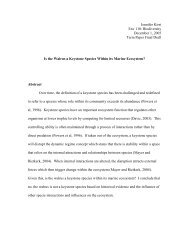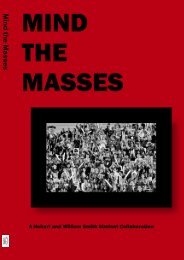share your intellectual passions - Hobart and William Smith Colleges
share your intellectual passions - Hobart and William Smith Colleges
share your intellectual passions - Hobart and William Smith Colleges
You also want an ePaper? Increase the reach of your titles
YUMPU automatically turns print PDFs into web optimized ePapers that Google loves.
CONSTRUCTIONS OF ASIAN MASCULINITY IN THE COLONIAL MINDBrendan CsapossMy project explored European constructions of Asians <strong>and</strong> their culture in the Age ofEmpire by investigating two questions: “What are the fundamental differences inconstructions of Asian cultures across different colonizing nations <strong>and</strong> Asian cultures?”<strong>and</strong> “How do these differences affect colonial constructions of Asian gender within thosecultures?”My desire to investigate this area springs from my previous coursework in LGB Studies<strong>and</strong>, in particular, studies of masculinity, coursework on European constructions ofgender <strong>and</strong> race undertaken during my semester in the Netherl<strong>and</strong>s, <strong>and</strong> my ownexperience of the ways in which racial stereotypes <strong>and</strong> the gender constructionsassociated with them are so often lived out in our country, especially within thehomosexual male community.In my investigation of my core questions, I first examined <strong>and</strong> compared the interactionsof British colonials <strong>and</strong> Indians with those of French colonists <strong>and</strong> the Indochinese (mostspecifically the Vietnamese). I then evaluated the ways in which these interactionsinfluenced the sexual <strong>and</strong> gender constructions that these colonists projected onto thenative people, but especially colonized males. In doing so, I found a very clear distinctionbetween the two colonial powers on both accounts. The British, who championed aVictorian “myth of manhood,” constructed the colonized Indian male as grosslyeffeminate. This construction was used as a moral justification for the rule of Indiathroughout the Victorian era. 1 By contrast, the French in Indochina constructed theentirety of the Vietnamese country, from the people to the forests, as a brutal l<strong>and</strong>scapethat was to be feared. The French constructed Vietnamese sexuality as somethinginherently dangerous to the colonial male, which accounts for the differences in approachto the colonized, when compared with the British. 2 Ultimately, I found that the clearestdistinction between these two colonial powers was the feelings that native culture evokedin them, which led to the attitudes that colonials took in approaching colonized natives.1 Revathi Krishnaswamy, “The Economy of Colonial Desire,” The Masculinity Studies Reader, ed. RachelAdams <strong>and</strong> David Savran (Malden, MA: Blackwell Publishers, 2002) 299.2 Milton Osborne, “Fear <strong>and</strong> Fascination in the Tropics: A Reader’s Guide to French Fiction on Indo-China,”Asia in Western Fiction, ed. Robin W. Winks <strong>and</strong> James R. Rush (Honolulu: University ofHawaii Press, 1990) 162-165.11
















